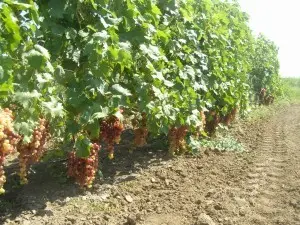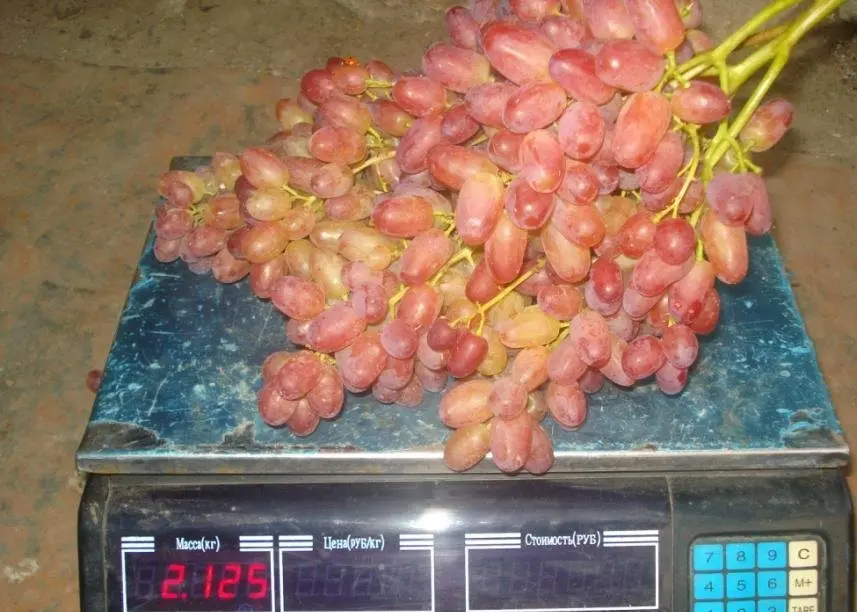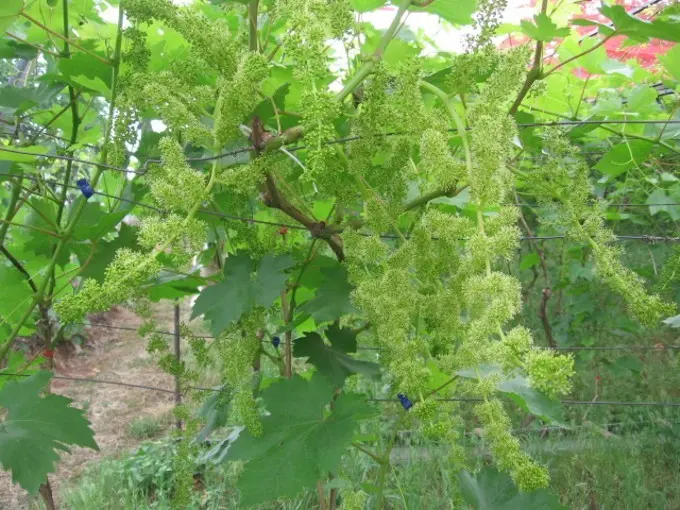To date, seedless grape varieties are becoming increasingly popular among winegrowers. Despite the fact that these species were known in antiquity, only now they have become widespread. Breeders bring out new species every year. One of the last, which was bred relatively recently, is the Veles grape. It is this grape variety that our article will be devoted to.
Variety description
The Veles grape variety was bred by crossing Rusbol and Sofia varieties. It was first obtained in the city of Zaporozhye, in Ukraine, from the breeder V.V. Zagorulko. They also gave the first description.
Veles grapes are a hybrid form of seedless grapes. The plant is classified as an early ripening variety (about 100 days pass between the process of bud break and fruit ripening).
The vine is characterized by a very high growth rate. Her maturation is good and along the entire length of the shoot. The maximum load on the eyes per bush is about 35 eyes.

Flowers, in quantities from two to four, are formed on one vegetative shoot. For the variety Veles, hermaphroditic or bisexual flowers are described, which contain both stamens and pistils.
Despite the fact that in such a situation pollination of flowers is sufficient, additional pollination is necessary to improve fruitfulness – it can increase yield by 20%.
A bunch of grapes is very large in size and can reach up to 2 kg in weight. The clusters may be conical or cylindrical. They are very branchy.
Given the characteristics of the variety, Veles is the most preferred type of grape, which is suitable for growing in the temperate climate of Belarus, Ukraine and Our Country.

Berries in clusters are located with medium density or friability. They have an oval shape. Their mass varies and averages about 5 g. The peel of the fruit is pink and of medium thickness. When eating, it is not felt. In the light, the fruits acquire an amber transparency, which gives an extraordinary aesthetic appearance to the entire bunch. The pulp of the berries is dense with a pronounced nutmeg flavor. Sometimes in the pulp there are rudiments of seeds in the form of soft-bodied bones. While eating, they are almost invisible.
With high humidity, cracking and rotting of the berries occurs. In dry and sunny weather, without loss of taste, the clusters dry out or raisin, they can stay on the bush for up to 45 days. The clusters sit very strongly on the bush and it takes effort to separate them from the vine.
Growing conditions
Reproduction of grapes occurs with the help of cuttings harvested in autumn or purchased seedlings. After planting, both cuttings and seedlings take root perfectly.
If you decide to purchase seedlings, then you should know that they are sold both grafted and rooted. Veles refers to unpretentious care varieties.
In order to increase productivity, speed up the process of fruit ripening, increase the size of the bunch of grapes and improve the taste of berries, spring pruning is carried out.
Pruning for fruiting is carried out on six or eight eyes. You can find information that this pruning can be carried out for a larger amount.

Since this species is characterized by a fairly high frost resistance (up to -21), it can not be covered for the winter. But experienced winegrowers advise that covering a grape bush for the winter with a film does not hurt.
High humidity and frequent precipitation during the summer can lead to a decrease in the taste and transportable qualities of the fruit.
Features
Characterized by high productivity. The plant bears fruit steadily and every year. Fruit ripening occurs by early October. At the same time, it is possible to start harvesting the main crop on open ground as early as early August.
Prone to the formation of stepchildren on the same shoots where the clusters are formed. Stepchildren also bear fruit, but they ripen by mid-autumn.
It is an early ripe variety and has two harvest waves: in August and autumn.

The plant has high frost resistance and fairly high resistance to most diseases (downy mildew, mildew, oidium and other fungal diseases). Well transfers both transportation, and storage, thanks to dense and elastic pulp.
Video “Grape variety Veles”
In this video you can clearly see the characteristics of this grape variety
This type of grape is most suitable for growing in the temperate zone. A number of characteristics put the Veles variety in one of the first places. Growing this grape is suitable for any personal plot.









